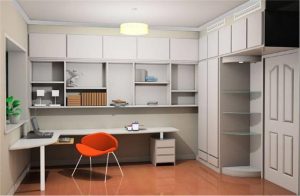Aircraft plywood (aircraft ply) is an outdoor plywood made of thin veneers (usually birch) made of uniform and high-strength wood and glued with phenolic resin glue. It is water-resistant, weather-resistant and antibacterial. The plywood material is uniform, the gluing performance is good, the bulk density is light, and the mechanical strength is high. It is used in the manufacture of aircraft, gliders and target aircraft.
Application scenarios of plywood in aerospace
Aircraft wing surfaces
1.Plywood can be used to manufacture aircraft wing surfaces, such as wing skins and ailerons. Its light weight, high strength and durability make it an ideal material for these applications.
2.Plywood structures can optimize aerodynamic performance, reduce drag and increase lift.
3.Due to its high tear resistance, plywood wing surfaces show excellent stability when subjected to high stress loads.
Fuselage Structure
1.Plywood is used in aircraft fuselage structures, including floors, partitions and skins. Its high specific strength and stiffness enable it to withstand the stresses generated during flight.
2.Plywood fuselage structures are lightweight, contributing to aircraft fuel efficiency and overall performance.
3.By using different plywood laminates, customized structural properties can be achieved to meet specific aircraft design requirements.
Aerospace Composites
1.Plywood can be combined with other materials, such as carbon fiber and glass fiber, to form lightweight, high-strength, durable composites.
2.Plywood composites are used to manufacture aircraft fuselages, wings, and tails, improving structural efficiency and reducing weight.
3.Optimizing the design and manufacturing technology of plywood composites is an area of ongoing research in the aerospace industry.
Light aircraft construction
1.Plywood is widely used in the construction of light aircraft, such as private jets and ultralight aircraft. Its light weight, durability and easy processing characteristics make it an ideal material.
2.Plywood structures provide the required strength and rigidity in light aircraft while keeping weight to a minimum.
3.Plywood is cost-effective in light aircraft construction, making aviation accessible to more people.
Unmanned Aerial Vehicle Systems
1.Plywood can be combined with other materials, such as carbon fiber and glass fiber, to form lightweight, high-strength, durable composite materials.
2.Plywood composites are used to manufacture aircraft fuselages, wings, and tails, improving structural efficiency and reducing weight.
3.Optimizing the design and manufacturing technology of plywood composites is an area of ongoing research in the aerospace industry.
Space Exploration
1.Plywood is used to manufacture spacecraft components such as satellite antennas and solar panels. Its durability, stability and smooth surface make it suitable for space applications.
2.Plywood exhibits excellent thermal insulation properties in the space environment, protecting sensitive equipment from extreme temperatures.
3.The lightweight properties of plywood help reduce the launch weight of spacecraft and improve mission efficiency.
Special applications
In addition to the conventional applications mentioned above, special applications of plywood in aerospace include:
*Radar covers: The non-conductivity and layered structure of plywood make it an ideal material for making radomes, which can reduce radar wave reflections and increase radar sensitivity.
*Thermal conductive materials: The layered structure of plywood provides excellent thermal conductivity, making it suitable for use as a thermal conductive material in aerospace thermal management systems.
*Absorbent materials: The sound absorption properties of plywood make it a good choice for aircraft cabin and engine sound insulation materials, helping to reduce noise and vibration levels.
Historical application cases
Aircraft during World War II (such as the British de Havilland Mosquito bomber):
Lightweight and high strength: The specific strength (strength/weight ratio) of plywood (birch plywood) is close to that of aluminum alloy, making it suitable for manufacturing fuselages, wings and tails.
Flexible process: Complex aerodynamic shapes can be formed by molding, reducing the need for riveting and reducing air resistance.
Quick production: In the context of wartime metal shortages, wood resources are more easily available and production cycles are short.
Early gliders and experimental aircraft:
Plywood is often used for skins and structural parts of small aircraft due to its low cost and easy manual processing.

